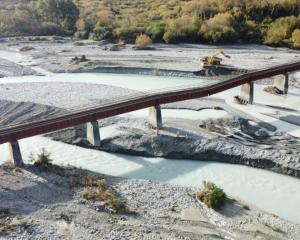An El Nino hitting New Zealand this summer is now "extremely likely", climate scientists say.
The National Institute of Water and Atmosphere (NIWA) today issued its climate outlook for the next three months, reporting that it was "virtually certain" - with a 97 per cent chance - that the ocean-driven El Nino would continue through to October.
Further, it was "extremely likely" - with a likelihood of above 90 per cent - that the El Nino would persist into the summer of 2015/16.
Over the next three months, above-normal pressure was forecast over and to the south of Australia, while below normal pressure was expected well to the northeast of New Zealand.
This circulation pattern is likely to be accompanied with anomalous south-westerly winds - which is typical of an El Nino influence during winter-spring.
In New Zealand, the system typically brings cooler, wetter conditions, bringing higher rainfall to regions that are normally wet, and often drought to areas that are usually dry.
Farmers in the western, wetter parts of the country often faced significant damage to pastures from too much rainfall, and it was also harder for stock to thrive in the constant wet.
Those in the east, faced with dry conditions, needed to consider food availability for stock - the last big El Nino in the summer of 1997/1998 cost the country hundreds of millions of dollars.
NIWA forecaster Chris Brandolino said it remained to be seen what form the El Nino would take, but there was concern it could make things tougher for farmers in eastern parts of the South Island and North Island that were still dry from last summer.
"Those farmers really depend on normal rainfall for a way of life and they endured a really rough summer... as we head into summer again, El Nino can make things even worse."
This week, MetService reported parts of the Pacific Ocean were now the hottest they've been in 17 years, with sea temperatures across the eastern half of the Pacific more than 2C above normal.
MetService meteorologist Georgina Griffiths told NZME that El Nino's impacts on New Zealand would vary from region to region.
Generally, western areas would be wetter, and the eastern seaboard drier than usual, especially around December and January.
Meanwhile, temperatures were about equally likely to be average or below average in all regions of the country over the next three months.
Rainfall totals were about equally likely to be in the near normal or below normal range for all regions of New Zealand except for the west of the South Island, where near normal or above normal rainfall was about equally likely.
Soil moisture and river flow were most likely to be in the below normal range for the north of the North Island and the east of the South Island.
In the west of the South Island, soil moisture levels and river flows for the period as a whole were most likely to be in the above normal range.
Soil moisture and river flows were equally likely to be near normal or below normal in the east of the North Island and the north of the South Island.
In the west of the North Island, soil moisture levels are most likely to be in the near normal range, while river flows are equally likely to be in the near normal or below normal range.
What is El Nino?
• El Nino is a climate pattern associated with unusually warm ocean waters in parts of the Pacific Ocean.
• An El Nino event can have a significant impact on weather patterns, ocean conditions and fisheries across a large part of the earth.
• During El Nino, cyclone conditions in the tropical South Pacific shift eastwards, causing more cyclones than normal in areas like the Cook Islands and French Polynesia.
• El Nino could also cause heavy rainfall and flooding over Peru, and droughts over Indonesia and Australia.
• In New Zealand, an El Nino event could make western areas wetter, and the eastern seaboard drier than usual.
• El Nino means 'The Little Boy' or 'Christ Child' in Spanish. It was first observed in the 1600s by fishermen off the South American coast.
By Jamie Morton of the New Zealand Herald












